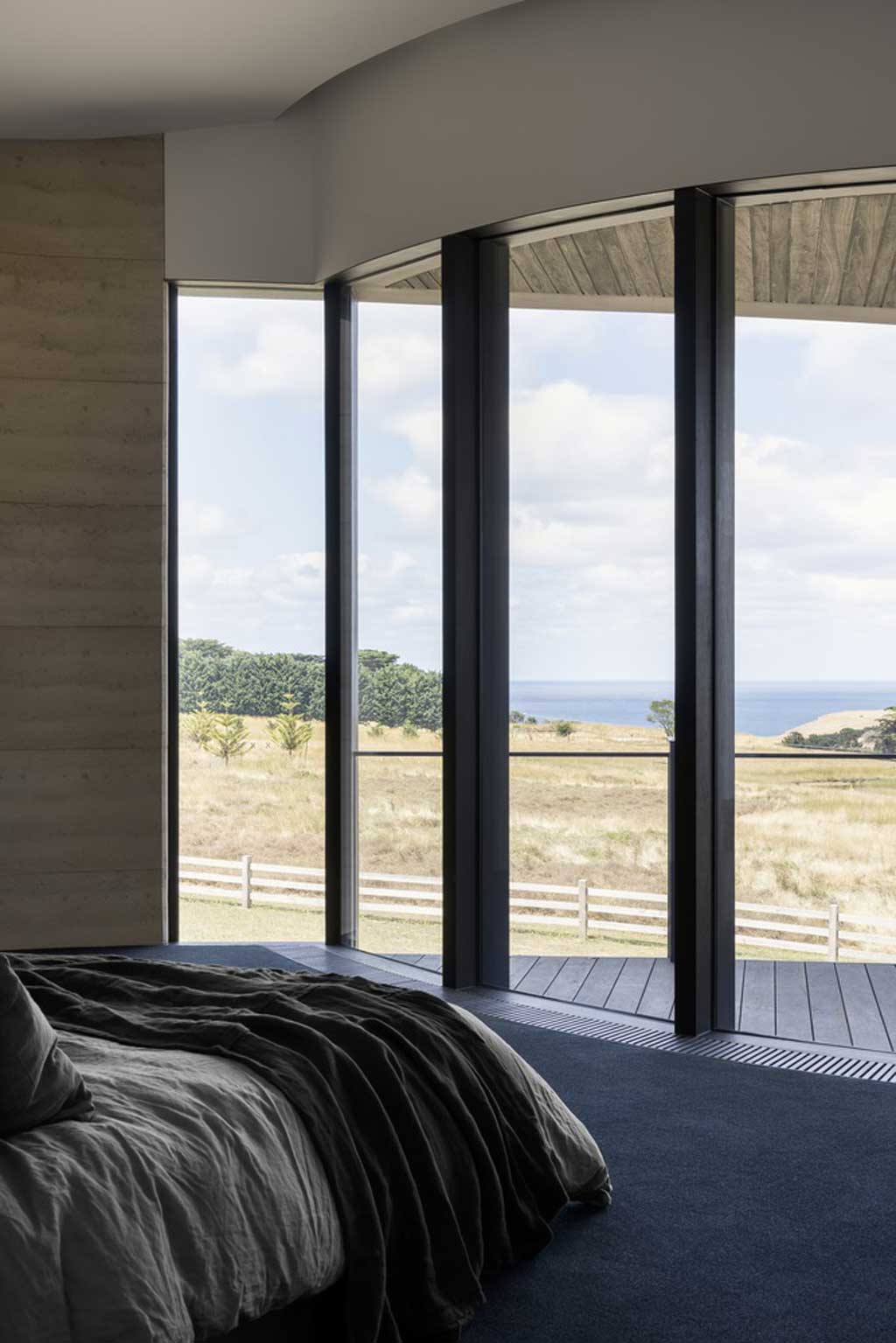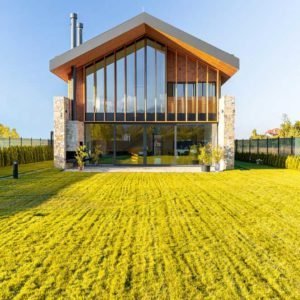In the realm of architecture, the narrative is not only crafted by the shape of structures but significantly by the materials that cloak its form. The modern era has welcomed a symphony of materials, each playing a pivotal role in designing buildings that are not just shelters but pieces of art. The choice of material, from wood and glass to concrete and stone, does more than dictate the durability and sustainability of a structure; it influences the aesthetics, the interaction with light, and the very atmosphere it encapsulates. This narrative explores how sleek angles and bold textures have become more than architectural choices—they are statements of style, function, and innovation.




| Architects | https://www.woodmarsh.com.au/ |
| Images | https://www.timothykaye.com/ |
Sleek Angles and Glass
Glass, in its transparent glory, has revolutionized the way spaces interact with light and the outside world. The use of glass in modern architecture goes beyond windows; it is a primary facade material that blurs the boundaries between interior and exterior. The sleek angles formed by glass facades not only contribute to a building’s futuristic look but also facilitate a natural illumination that breathes life into the spaces within. This material, when paired with precise angular designs, transforms buildings into luminous beacons in their landscapes, reflecting the sky by day and glowing from within by night.
Glass also plays a critical role in sustainability, allowing for passive solar heating and reducing the need for artificial lighting. Its versatility in texture and form enables architects to create patterns and reflections that add a layer of complexity and beauty to the design. Furthermore, the emotional impact of glass, fostering openness and transparency, resonates with the contemporary ethos of connection and lightness.




Bold Textures and Concrete
Concrete, with its inherent strength and versatility, stands as a testament to modern architectural innovation. When molded into sleek angles, it creates structures that are both monumental and expressive. The bold textures achievable with concrete—from smooth finishes to rugged, exposed aggregates—lend a tactile quality to buildings that evoke a sense of solidity and permanence.
This material, often perceived as cold and impersonal, is reimagined through modern architectural practices to exude warmth and character. Architects manipulate concrete to capture shadows and light, crafting surfaces that change appearance with the time of day. The angular forms, accentuated by the material’s texture, make each facade a canvas for the interplay of natural elements, embodying a dynamic aesthetic that is both raw and refined.





Wood and Warmth
Wood, with its natural warmth and versatility, brings a soft counterpoint to the sleek angles of modern architecture. It introduces texture and color that contrast with the coldness of glass and concrete, adding a tactile and visual warmth to buildings. Wood’s ability to be shaped and its inherent patterns provide a unique aesthetic that complements the boldness of modern materials.
Incorporating wood into contemporary designs not only enhances the building’s visual appeal but also contributes to its environmental sustainability. Wood, being a renewable resource, embodies the principles of green architecture. It provides excellent insulation, reducing energy consumption, and its natural texture adds a layer of complexity to the sleek, angular designs of modern structures, making them feel more inviting and connected to the natural world.




Stone and Timelessness
Stone, a material as old as architecture itself, finds a renewed expression in modern designs. Its bold textures and natural colors bring an element of timelessness to the sleek angles of contemporary buildings. Stone’s durability and maintenance-free aspect make it an ideal companion for modern materials, adding a layer of historical continuity to the architectural narrative.
The use of stone in modern architecture is not just functional but deeply symbolic. It grounds buildings with a sense of permanence and resilience, connecting them to the landscape and the history of place. The textural contrast between the smoothness of glass and the roughness of stone accentuates the tactile experience of architecture, making each surface a discovery of shadows, light, and color.



The materials of modern architecture—glass, concrete, wood, and stone—do more than fulfill structural requirements; they narrate stories of innovation, sustainability, and artistic expression. Sleek angles and bold textures are not mere design trends but reflections of a deeper understanding of how spaces can influence human emotion and interaction. As architects continue to explore the potential of these materials, the future of architecture promises to be one of endless creativity and inspiration.












